Cypress Get Attribute Of Element
Cypress is a powerful end-to-end testing framework that allows developers to write automated tests for web applications. It provides a comprehensive set of tools and commands to interact with elements on a webpage, making it easier to test user interactions and ensure the functionality of the application. In this article, we will focus on one specific aspect of Cypress: accessing and retrieving element attributes using Cypress commands.
Cypress commands and element selection
Before we dive into accessing element attributes, let’s first understand how Cypress commands and element selection work. Cypress provides a wide range of commands that allow developers to interact with elements on a webpage. These commands can be used to perform actions like clicking buttons, filling out forms, or verifying the existence of certain elements.
To select elements in Cypress, developers can use CSS-selectors or XPath. Cypress provides the ‘get’ command, which is used to select elements based on these selectors. The ‘get’ command returns a reference to the selected element or elements, which can then be used to perform further actions.
Understanding element attributes
Elements on a webpage can have various attributes associated with them. These attributes provide additional information about the element and can be used to manipulate or retrieve values from the element. Some common attributes include ‘id’, ‘class’, ‘href’, ‘src’, ‘data-*’, and many more.
Accessing element attributes in Cypress
Cypress provides the ability to access the attributes of an element using the ‘invoke’ method. The ‘invoke’ method can be used to invoke a function on the selected element, which in this case, is used to retrieve the value of the desired attribute.
To access an attribute, developers can use the following syntax:
“`javascript
cy.get(‘
“`
For example, to retrieve the value of the ‘href’ attribute of a link with a specific class, the following code can be used:
“`javascript
cy.get(‘a.my-link’).invoke(‘attr’, ‘href’)
“`
Using the ‘get’ command to select elements
The ‘get’ command is an essential part of Cypress’s element selection. It allows developers to select elements based on CSS-selectors or XPath. Developers can use the ‘get’ command to retrieve a single element or multiple elements, depending on the selector used.
To retrieve a single element, developers can use the following syntax:
“`javascript
cy.get(‘
“`
This will return a reference to the selected element, which can be further used to perform actions or retrieve attributes.
To retrieve multiple elements, developers can use the following syntax:
“`javascript
cy.get(‘
// Perform actions on each element
})
“`
This will select all the elements matching the selector and iterate over each element, allowing developers to perform actions or retrieve attributes on each element.
Retrieving attribute values with Cypress’ ‘invoke’ method
As mentioned earlier, the ‘invoke’ method can be used to retrieve the values of element attributes. The returned value from the ‘invoke’ method can be stored in a variable or used directly in assertions.
“`javascript
cy.get(‘
// Do something with the attribute value
})
“`
For example, to retrieve the ‘src’ attribute value of an image element, the following code can be used:
“`javascript
cy.get(‘img.my-image’).invoke(‘attr’, ‘src’).then((src) => {
// Use the src value
})
“`
FAQs
1. What is the difference between ‘get’ and ‘invoke’ in Cypress?
The ‘get’ command is used for element selection, while the ‘invoke’ method is used to perform actions on the selected element, such as retrieving attribute values.
2. How do I select child elements in Cypress?
To select child elements, you can use CSS-selectors or XPath in conjunction with the ‘get’ command. For example, to select all the ‘li’ elements within an ‘ul’ element, you can use the following code: `cy.get(‘ul’).find(‘li’)`.
3. What is ‘data-cy’ in Cypress?
‘data-cy’ is a custom attribute that can be added to elements in order to facilitate selection in Cypress tests. It provides a reliable way to select elements, especially when the element doesn’t have a unique identifier like an ‘id’ or ‘class’.
4. How do I retrieve the value of a data attribute in Cypress?
To retrieve the value of a data attribute, you can use the ‘invoke’ method with the attribute name. For example, to retrieve the value of a ‘data-testid’ attribute, you can use the following code: `cy.get(‘
5. How can I perform drag and drop actions in Cypress?
Cypress provides a ‘drag’ command that allows you to simulate drag and drop actions on elements. You can use this command to specify the source element and the destination element for the drag and drop operation.
6. How do I get the placeholder value of an input field in Cypress?
To retrieve the placeholder value of an input field, you can use the ‘invoke’ method with the ‘attr’ function and specify the attribute name as ‘placeholder’. For example: `cy.get(‘input’).invoke(‘attr’, ‘placeholder’)`.
7. How can I check if an element has a specific attribute in Cypress?
You can use the `have.attr` assertion in Cypress to check if an element has a specific attribute. For example: `cy.get(‘input’).should(‘have.attr’, ‘required’)` will check if the ‘required’ attribute is present on the input element.
In conclusion, Cypress provides powerful commands and methods to select and interact with elements on a webpage. The ‘get’ command allows developers to select elements based on CSS-selectors or XPath, and the ‘invoke’ method can be used to retrieve attribute values. Understanding and utilizing these features of Cypress can greatly enhance the effectiveness and efficiency of automated end-to-end testing.
Get And Set Multiple Elements Attributes
How To Get All Attributes Of Element In Cypress?
Cypress is a modern end-to-end testing framework that allows developers to write fast, consistent, and reliable tests for web applications. With its extensive API, Cypress provides various methods to interact and manipulate elements on a webpage. One common task during web testing is to retrieve the attributes of an element. In this article, we will explore different techniques to accomplish this using Cypress.
Before we dive into the details, let’s first understand what an attribute is. In HTML, attributes provide additional information about an element and are defined within the start tag. Common attributes include `id`, `class`, `name`, `value`, and so on. Retrieving element attributes is essential for validating expected behavior and helps to ensure the correctness of your web application.
1. Using the `.invoke()` method:
Cypress provides the `.invoke()` method, which can be used to invoke a function on a subject, in this case, an element. By passing the attribute name as the argument to `.invoke()`, we can retrieve the attribute’s value. For example:
“`javascript
cy.get(‘#myElement’).invoke(‘attr’, ‘attributeName’).then((value) => {
// value contains the attribute’s value
})
“`
2. Using the `.invoke()` method with a custom callback:
In case you need to perform some custom logic with the attribute value, you can pass a callback function as the second argument to the `.invoke()` method. This callback function will receive the attribute value as its argument. Here’s an example:
“`javascript
cy.get(‘#myElement’).invoke(‘attr’, ‘attributeName’, (value) => {
// Perform custom logic with the attribute value
})
“`
3. Using `.should()` and `.then()` methods:
If you want to assert the value of an attribute, you can use the `.should()` method in conjunction with `.invoke()` or `.then()`. `.should()` asserts that the attribute value matches the expected value. Here’s an example:
“`javascript
cy.get(‘#myElement’).invoke(‘attr’, ‘attributeName’).should(‘eq’, ‘expectedValue’)
“`
4. Using the `.getAttribute()` Cypress command:
Cypress also provides a built-in command called `.getAttribute()` specifically designed to retrieve the value of an attribute. It takes the attribute name as its argument and returns a promise. You can use it like this:
“`javascript
cy.get(‘#myElement’).getAttribute(‘attributeName’).then((value) => {
// value contains the attribute’s value
})
“`
5. Using the `.props()` method:
In addition to the `.invoke()` and `.getAttribute()` approaches, you can use the `.props()` method to retrieve an element’s properties, which include the attributes. However, note that `.props()` returns an object containing all the element properties, not just the attributes. Here’s an example:
“`javascript
cy.get(‘#myElement’).props().then((elementProperties) => {
// elementProperties contains all the properties, including the attributes
})
“`
FAQs:
Q1. Can I retrieve multiple attributes from an element?
Yes, you can retrieve multiple attributes using the methods mentioned above. Simply call the method multiple times, each time with a different attribute name.
Q2. What should I do if the attribute value is dynamic?
If the attribute value changes dynamically, you can use a combination of Cypress commands and assertions to accommodate for the change. For example, you can use `.invoke()` combined with `.should()` to assert against the expected value in a loop.
Q3. Are there any performance considerations when retrieving attributes?
Retrieving attributes should generally not have significant performance implications. However, it is a good practice to optimize your test code and avoid unnecessary attribute retrievals if possible.
Q4. How can I handle attributes that are not present on an element?
Cypress gracefully handles attributes that are not present. If you try to retrieve a non-existent attribute, the returned value will be `null` or `undefined`, depending on the method used.
Q5. Can I retrieve attributes of multiple elements at once?
Yes, Cypress allows retrieving attributes from multiple elements simultaneously. You can use the appropriate selector to target multiple elements and retrieve their attributes in a loop using any of the mentioned methods.
In conclusion, Cypress provides several methods to retrieve attributes of elements in a web application. Whether you need to validate expected behavior or assert against specific attribute values, these techniques will help you efficiently extract the required information during your end-to-end testing endeavors. Remember to choose the most suitable method based on your specific requirements and the context of your test scenario.
How To Find Element By Attribute In Cypress?
Cypress is a powerful and efficient JavaScript End-to-End testing framework that allows developers to write and run tests for web applications. One crucial aspect of testing is being able to locate elements on a webpage to interact with them. In this article, we will explore how to find elements by attribute in Cypress, providing you with a comprehensive guide to effectively test your web application.
Why Would You Want to Find Elements by Attribute?
When it comes to web development, elements often have various attributes assigned to them. These attributes serve different purposes and play a vital role in how an application functions. During testing, it becomes essential to interact with specific elements based on their attributes. For example, you might want to click on a button with a specific class or locate an input field with a unique data-testid attribute. By finding elements by attribute, you can accurately test specific functionalities in your application.
Using CSS Selectors to Find Elements by Attribute
In Cypress, you can leverage CSS Selectors to locate elements by attribute. CSS Selectors are powerful tools that allow you to specify the elements you want to target based on their attributes. You can use various attribute selectors, such as the attribute name, attribute value, attribute with a specific value, attribute starting with a particular value, and many more.
To find an element by attribute in Cypress, you can use the `get` command, which is the most common way to locate and interact with elements. The `get` command takes a CSS Selector as its argument, enabling you to find elements using various attribute selectors.
For example, let’s say you want to find a button with the class name “submit-button” on your webpage. You can use the following code in Cypress:
“`javascript
cy.get(‘button.submit-button’).click();
“`
This code will locate the button element with the class name “submit-button” and perform a click action on it.
Similarly, you can find elements based on other attributes like `id`, `name`, `data-testid`, `aria-label`, etc. For instance, to locate an input field with the `data-testid` attribute set to “username-input”, you can use the following code:
“`javascript
cy.get(‘input[data-testid=”username-input”]’).type(‘JohnDoe’);
“`
This code will select the input field with the specified `data-testid` attribute and type ‘JohnDoe’ into it.
FAQs
Q: Can I find elements by multiple attributes?
A: Yes, you can find elements based on multiple attributes using CSS Selectors in Cypress. To do this, you can combine multiple attribute selectors in your CSS Selector. For example:
“`javascript
cy.get(‘input[data-testid=”username-input”][placeholder=”Username”]’).type(‘JohnDoe’);
“`
This code will locate the input field with both the `data-testid` attribute set to “username-input” and the `placeholder` attribute set to “Username”.
Q: How can I find elements by attribute value containing a specific text?
A: If you want to find elements based on attribute value containing specific text, you can use the `*=value` attribute selector. For example:
“`javascript
cy.get(‘button[class*=”submit”]’).click();
“`
This code will locate the button element with a class containing the word “submit” and perform a click action on it.
Q: Is it possible to find elements with negation of an attribute value?
A: Yes, you can find elements by excluding a specific attribute value using the `:not` pseudo-class selector in CSS. For example:
“`javascript
cy.get(‘input:not([disabled])’).type(‘Test value’);
“`
This code will find all the input fields that do not have the `disabled` attribute and type ‘Test value’ into them.
Q: Can I find elements by custom attributes?
A: Yes, you can find elements by custom attributes in Cypress. You need to use the `[]` attribute selector to match the desired element. For example:
“`javascript
cy.get(‘div[data-custom-attribute=”my-custom-value”]’).click();
“`
This code will locate a `div` element with a custom attribute called `data-custom-attribute` and the value “my-custom-value” and perform a click action on it.
Conclusion
Effectively locating elements by attribute in Cypress is a critical skill for writing robust tests for your web application. By utilizing CSS Selectors and the `get` command, you can accurately locate elements based on different attributes to interact with them during your tests. Remember to use attribute selectors wisely and consider using combinations of attributes when needed. Happy testing!
Keywords searched by users: cypress get attribute of element Cypress get attribute value, Cypress get child element, Its cypress, Data-cy Cypress, Cypress get data attribute value, Cypress-drag and drop, Get placeholder value in cypress, Have attr Cypress
Categories: Top 61 Cypress Get Attribute Of Element
See more here: nhanvietluanvan.com
Cypress Get Attribute Value
What is Cypress Get Attribute Value?
Cypress provides a convenient way to retrieve the attribute values of HTML elements using the “get” command. The syntax for getting attribute values is as follows:
“`javascript
cy.get(‘selector’).invoke(‘attr’, ‘attributeName’)
“`
In this code snippet, ‘selector’ represents the CSS selector to identify the element, while ‘attributeName’ refers to the name of the attribute you want to retrieve.
Why Should You Use Cypress Get Attribute Value?
Using Cypress get attribute value can be incredibly beneficial during testing. Some of the reasons why you should consider leveraging this feature include:
1. Validating Application Behavior: By fetching attribute values, you can assert that the desired application behavior is executed correctly. For example, you can check whether a button is disabled or enabled based on its “disabled” attribute value.
2. Testing Dynamic Content: Web applications often rely on dynamically changing content. By accessing attribute values through Cypress, you can verify if the expected content is being rendered correctly. This is particularly helpful when dealing with asynchronous events or API integrations.
3. Data Validation: Understanding attribute values is crucial for ensuring data accuracy during testing. You can compare the displayed values with your expected results, helping to uncover any inconsistencies or errors.
How to Use Cypress Get Attribute Value?
To effectively utilize Cypress get attribute value, follow these steps:
Step 1: Installation and Setup
Start by installing Cypress, if you haven’t already, using npm or yarn. Once installed, initialize Cypress in your project directory. Cypress will generate a default folder structure and a sample test file.
Step 2: Write Test Cases
Inside the sample test file (typically located in the “cypress/integration” directory), start writing your test cases using Cypress commands such as “cy.visit()” to navigate to your application’s URL.
Step 3: Locate Elements
Identify the element(s) whose attribute value you want to retrieve. Cypress provides various selector options, including CSS, XPath, and others. Use the “cy.get()” command along with a selector to locate the desired element.
Step 4: Get Attribute Value
After locating the element, you can retrieve its attribute value using the “invoke(‘attr’, ‘attributeName’)” syntax. Replace ‘attributeName’ with the name of the attribute you wish to access.
Here’s an example usage of the Cypress get attribute value feature:
“`javascript
cy.visit(‘https://example.com’);
cy.get(‘button’).invoke(‘attr’, ‘disabled’).then((attr) => {
expect(attr).to.eq(‘true’)
});
“`
In this example, we visit a web page, find a button element, and retrieve its “disabled” attribute value. We then assert that the value is equal to ‘true’.
FAQs
1. What if the attribute value is dynamic and changes frequently?
In cases where attribute values change dynamically, you can use Cypress’s built-in retry mechanism. By setting `retries` in the “cy.get()” command, Cypress will automatically retry until the attribute value matches your assertion or the retry count is exhausted.
2. Can I retrieve multiple attribute values using a single command?
Yes, you can fetch multiple attribute values by chaining multiple “invoke” commands. Here’s an example:
“`javascript
cy.get(‘input’)
.invoke(‘attr’, ‘name’)
.invoke(‘attr’, ‘value’)
.then((name, value) => {
console.log(`Name: ${name}, Value: ${value}`);
});
“`
3. Can I retrieve custom attribute values?
Absolutely! Cypress get attribute value handles both built-in and custom attributes. Just provide the name of the attribute you want to access, regardless of whether it’s a standard HTML attribute or a custom one defined in your application.
Conclusion
Cypress get attribute value greatly enhances the testing experience by allowing developers to retrieve attribute values of HTML elements easily. This feature assists in validating application behavior, testing dynamic content, and ensuring data accuracy. By following the steps outlined in this article, you can effectively incorporate Cypress get attribute value into your testing workflow. We hope this comprehensive guide has provided a solid foundation for understanding and utilizing this powerful Cypress feature.
Cypress Get Child Element
Understanding the Basics of Getting Child Elements in Cypress
When working with Cypress, it is important to understand that it follows a chainable syntax that allows developers to perform actions on elements in a more readable and concise manner. The “get” command is extensively used to locate and interact with various elements on a web page. However, sometimes we need to specifically target child elements within a parent element.
To get child elements in Cypress, we can utilize the “get” command in conjunction with various CSS selectors, such as class names, IDs, or attributes. By utilizing these selectors, we can narrow down our focus and manipulate specific child elements as needed.
Approaches to Get Child Elements in Cypress
1. Using direct CSS selectors:
One common approach in Cypress is to use a CSS selector directly to locate and interact with child elements. For example, if we have a parent element with a class name of “parent-element” and a child element with the class name “child-element,” we can use the following code snippet:
“`javascript
cy.get(‘.parent-element .child-element’)
.should(‘be.visible’)
.click();
“`
This code snippet locates the parent element with the class name “parent-element” and then looks for the child element with the class name “child-element” within it.
2. Utilizing the “children” method:
Cypress provides the “children” method, which allows us to directly select the child elements based on a given selector. This method is useful when we know the specific attributes or properties of the desired child elements. Here’s an example:
“`javascript
cy.get(‘.parent-element’)
.children(‘.child-element’)
.should(‘have.length’, 3)
.each(($child) => {
cy.wrap($child)
.contains(‘Some Text’)
.click();
});
“`
In this code snippet, we first locate the parent element with the class name “parent-element”. Then, we use the “children” method and specify the selector as “.child-element” to get all child elements with that class name. We can then perform any necessary actions on these child elements, in this case, clicking on each child element that contains the text “Some Text.”
3. Navigating with “find”:
Cypress also provides the “find” method to locate child elements. This method enables developers to search for elements within another element, making the DOM traversal more specific and granular. Here’s an example:
“`javascript
cy.get(‘.parent-element’)
.find(‘.child-element’)
.should(‘have.length’, 5)
.first()
.click();
“`
In this snippet, we use the “find” method on the parent element with the class name “parent-element” and specify the selector “.child-element” to locate all child elements with that class name. We can then perform actions on these elements, such as clicking on the first matching child element.
FAQs
Q: How do I chain multiple child element selections in Cypress?
A: You can chain multiple child element selections by using consecutive “find” or “children” methods. For example:
“`javascript
cy.get(‘.parent-element’)
.find(‘.child-element’)
.find(‘.grandchild-element’)
.click();
“`
Q: Can I use XPath to get child elements in Cypress?
A: No, Cypress does not natively support XPath selectors. It is recommended to use CSS selectors, as they are more efficient and easier to read.
Q: What if the child elements have dynamic attributes or properties?
A: Cypress provides various methods for handling dynamic elements, such as using the “contains” method or using regular expressions within the CSS selectors. You can also utilize conditional statements or loop over elements to locate the desired child elements.
Q: Is it possible to get multiple child elements with the same selector?
A: Yes, you can use Cypress’s methods like “find,” “filter,” or “children” to locate and interact with multiple child elements that match a specific selector.
In conclusion, obtaining child elements in Cypress is a fundamental aspect of writing effective and reliable tests. By using CSS selectors, methods like “children” and “find,” and exploring various approaches, developers can efficiently access and manipulate child elements within web pages. With the ability to get child elements in Cypress, developers are empowered to write comprehensive tests that thoroughly validate their web applications’ functionality.
Its Cypress
Cypress trees, scientifically known as Cupressus, are a popular type of evergreen tree native to various regions across the globe. These majestic trees are known for their elegant, conical shape and lush, dense foliage. In this article, we will explore the various aspects of cypress trees, including their different species, characteristics, uses, and benefits.
Types of Cypress Trees
There are several species of cypress trees, each with its unique characteristics and habitat requirements. Some of the most notable species include the evergreen Italian cypress (Cupressus sempervirens), the bald cypress (Taxodium distichum), and the Montezuma cypress (Taxodium mucronatum).
1. Italian Cypress: Also known as Mediterranean cypress, this species is native to the eastern Mediterranean region and is widely recognized for its tall, slender shape. Italian cypress trees can grow up to 60-70 feet in height and have dark green foliage that retains its color throughout the year. Due to their aesthetically pleasing appearance, they are commonly used as ornamental trees in gardens and landscapes.
2. Bald Cypress: The bald cypress is native to the southeastern United States and is well-adapted to thrive in swampy, wetland environments. This deciduous conifer has needle-like leaves that turn rusty red in autumn before eventually shedding. It is known for its unique “knees” – woody projections that emerge from the roots and rise above the water surface. Bald cypress trees are often planted to stabilize soil and prevent erosion.
3. Montezuma Cypress: Indigenous to Mexico, the Montezuma cypress is a massive evergreen tree that can reach heights of over 160 feet. It is renowned for its towering presence and the distinctive buttressed roots that provide stability in the wetlands and riversides where it typically grows. Historically, Montezuma cypress wood has been used in construction due to its natural rot resistance.
Characteristics and Uses
Cypress trees share certain fundamental characteristics that make them unique and versatile. Some common features include:
1. Conical Shape: Cypress trees are known for their iconic, symmetrically conical shape. This growth pattern contributes to their aesthetic appeal and makes them an excellent choice for landscaping purposes.
2. Evergreen Foliage: Most cypress trees have dense, evergreen foliage that remains vibrant year-round. This characteristic makes them a popular choice for privacy screens and windbreaks.
3. Drought Tolerant: Cypress trees are often celebrated for their ability to thrive in dry or drought-prone climates. This resilience to limited water availability makes them a perfect choice for xeriscaping and water-wise gardening.
4. Rot Resistance: Several cypress species, such as the Montezuma and bald cypress, possess natural rot-resistant properties, making their wood a valuable resource for construction purposes. It is commonly used for making outdoor furniture, decking, and other structures exposed to the elements.
Benefits of Cypress Trees
Cypress trees provide numerous benefits to the environment and human wellbeing:
1. Soil Erosion Prevention: The extensive root systems of cypress trees help stabilize the soil, reducing erosion and protecting riverbanks and coastlines from storm damage.
2. Air Purification: As with most trees, cypresses play a vital role in air purification. Through the process of photosynthesis, they absorb carbon dioxide and release oxygen, contributing to cleaner air and combating climate change.
3. Beauty and Serenity: Cypress trees enhance the aesthetics of any landscape with their graceful silhouettes and lush foliage. Their presence brings a sense of tranquility and natural beauty to gardens, parks, and public spaces.
4. Wildlife Habitats: Cypress trees provide valuable habitats for a diverse range of wildlife. Birds, mammals, reptiles, and amphibians find refuge in the thick foliage, while the trees’ hollow trunks often function as nesting sites for various bird species.
Frequently Asked Questions about Cypress Trees
Q: Can cypress trees withstand cold climates?
A: While some cypress species, like the Italian cypress, thrive in warmer regions, others, such as the bald cypress, are adapted to colder climates. It is crucial to choose a species suitable for your specific climate when planting cypress trees.
Q: Are cypress trees difficult to maintain?
A: Cypress trees are generally low-maintenance, as they require minimal pruning and watering once established. However, certain species may have specific care requirements, so it is advisable to research and consult local experts for the best maintenance practices.
Q: Can cypress trees be grown in containers?
A: Yes, some smaller species of cypress, like the Hinoki cypress (Chamaecyparis obtusa), can be grown in containers. However, they require regular pruning and repotting to accommodate their growth.
Q: Do cypress trees attract pests or diseases?
A: Cypress trees are generally resistant to pests and diseases. However, certain species, such as the Leyland cypress, may be susceptible to certain issues like cypress cankers or spider mites. Regular monitoring and maintenance can help mitigate any potential problems.
Q: Are cypress trees suitable for urban environments?
A: Yes, cypress trees can thrive in urban environments as long as they are provided with adequate space for their roots to grow and are not exposed to excessive pollution or compacted soil. Proper care during establishment, such as mulching and regular watering, is essential to ensure their successful growth.
In conclusion, cypress trees offer a wide range of benefits and are valued for their aesthetic appeal, adaptability, and environmental contributions. From adding beauty to landscapes to offering sanctuary to various wildlife species, cypress trees continue to captivate and serve us in countless ways. Whether you are a gardener, a nature enthusiast, or a lover of beautiful landscapes, cypress trees are undoubtedly an exceptional choice to consider.
Images related to the topic cypress get attribute of element

Found 44 images related to cypress get attribute of element theme








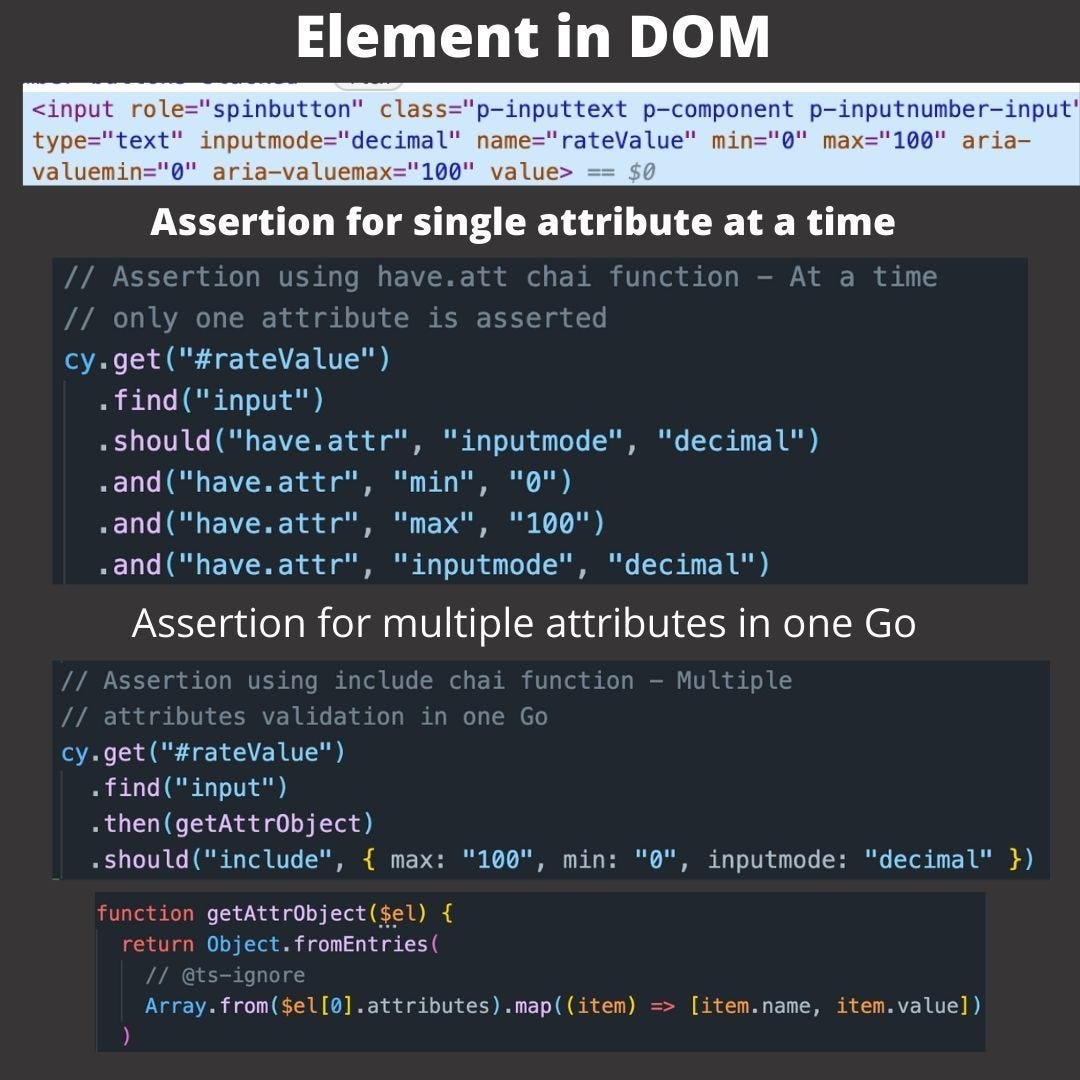

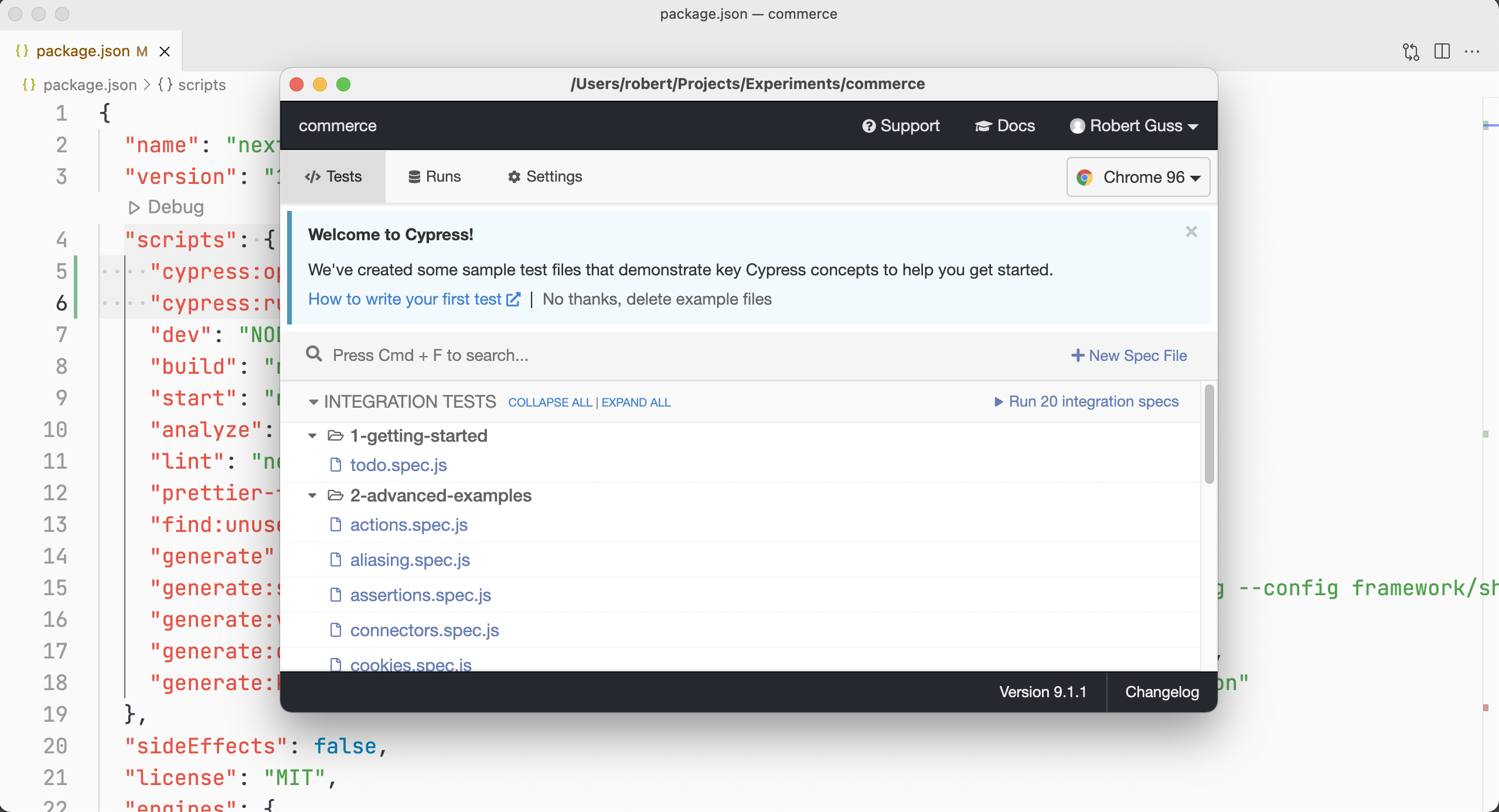




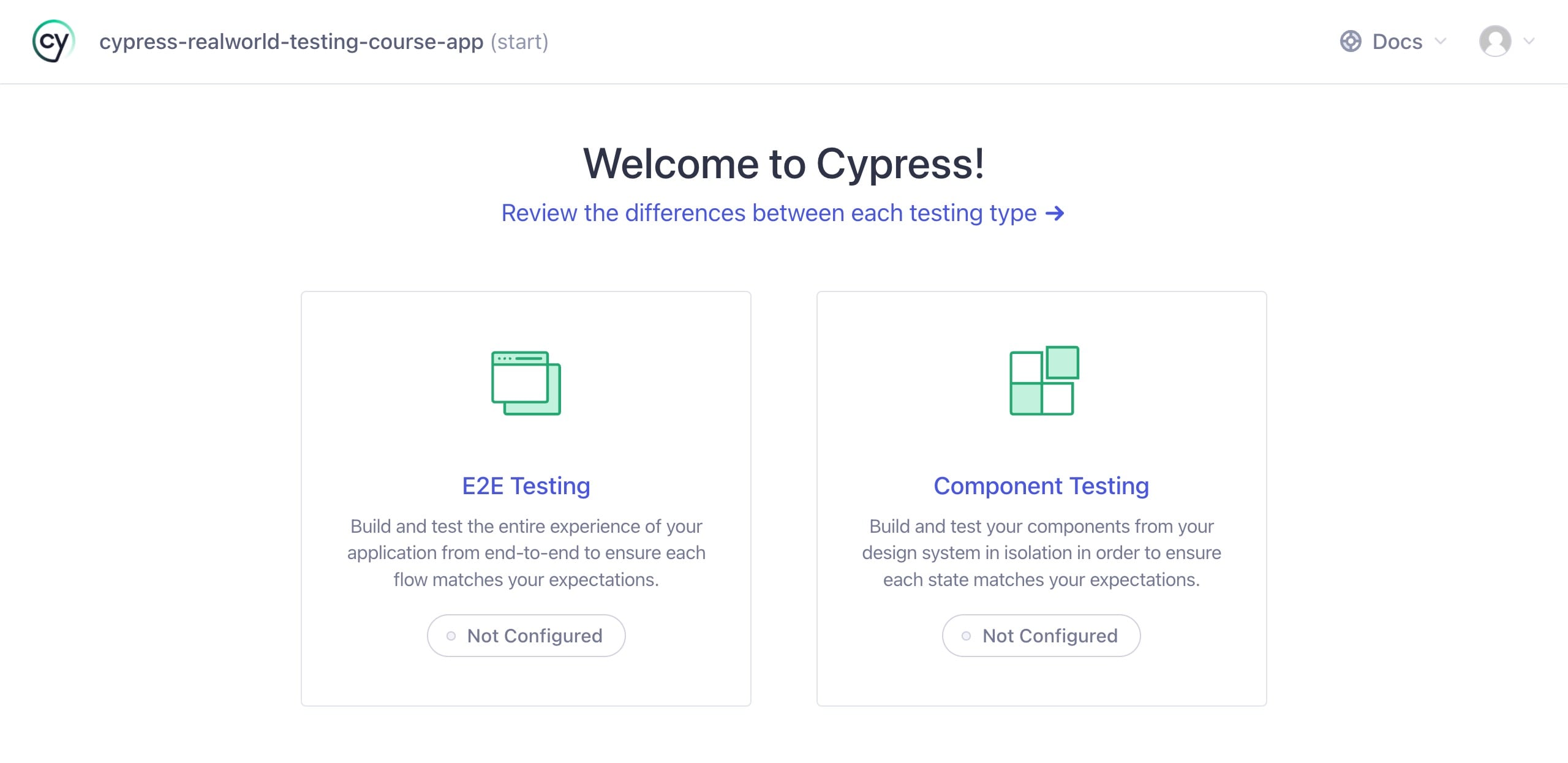





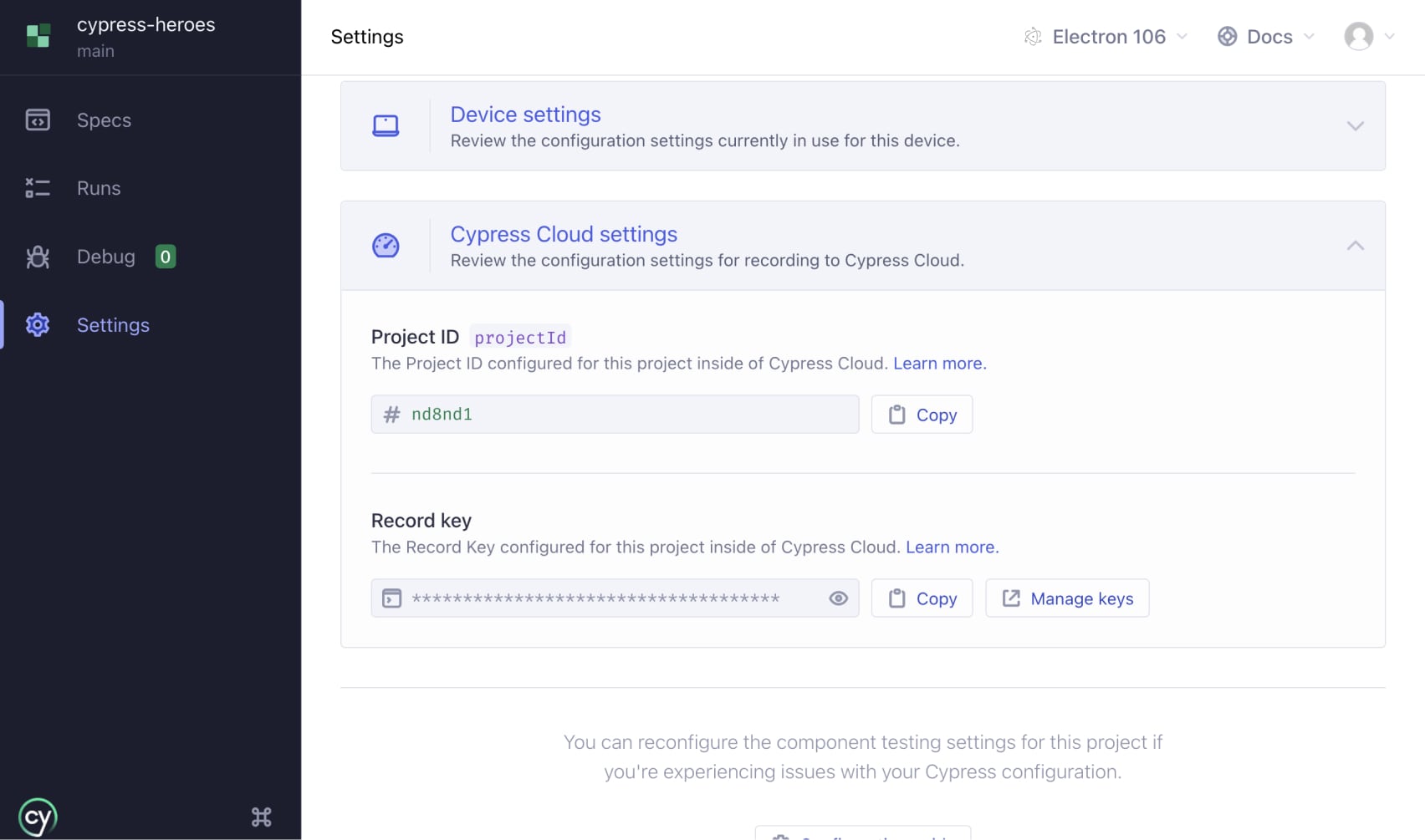







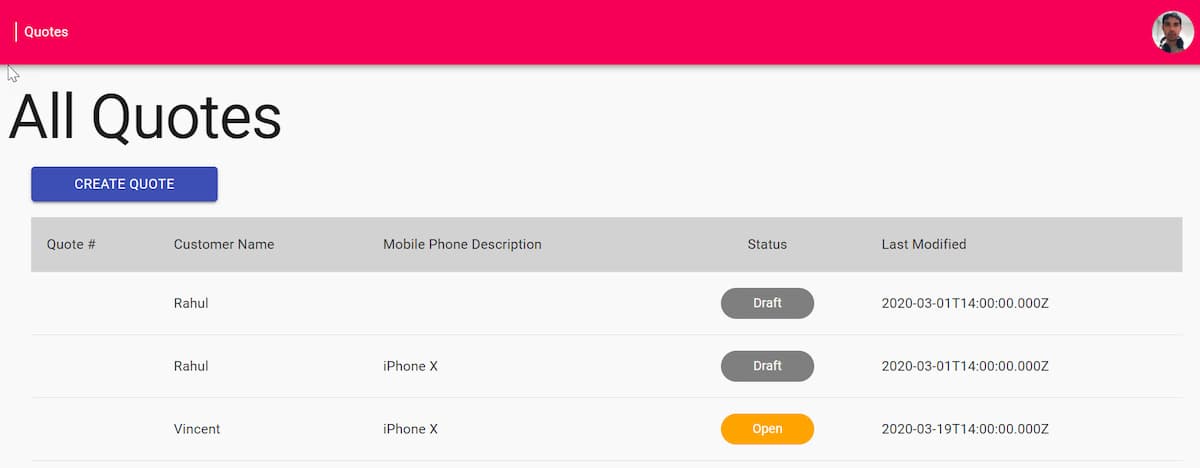





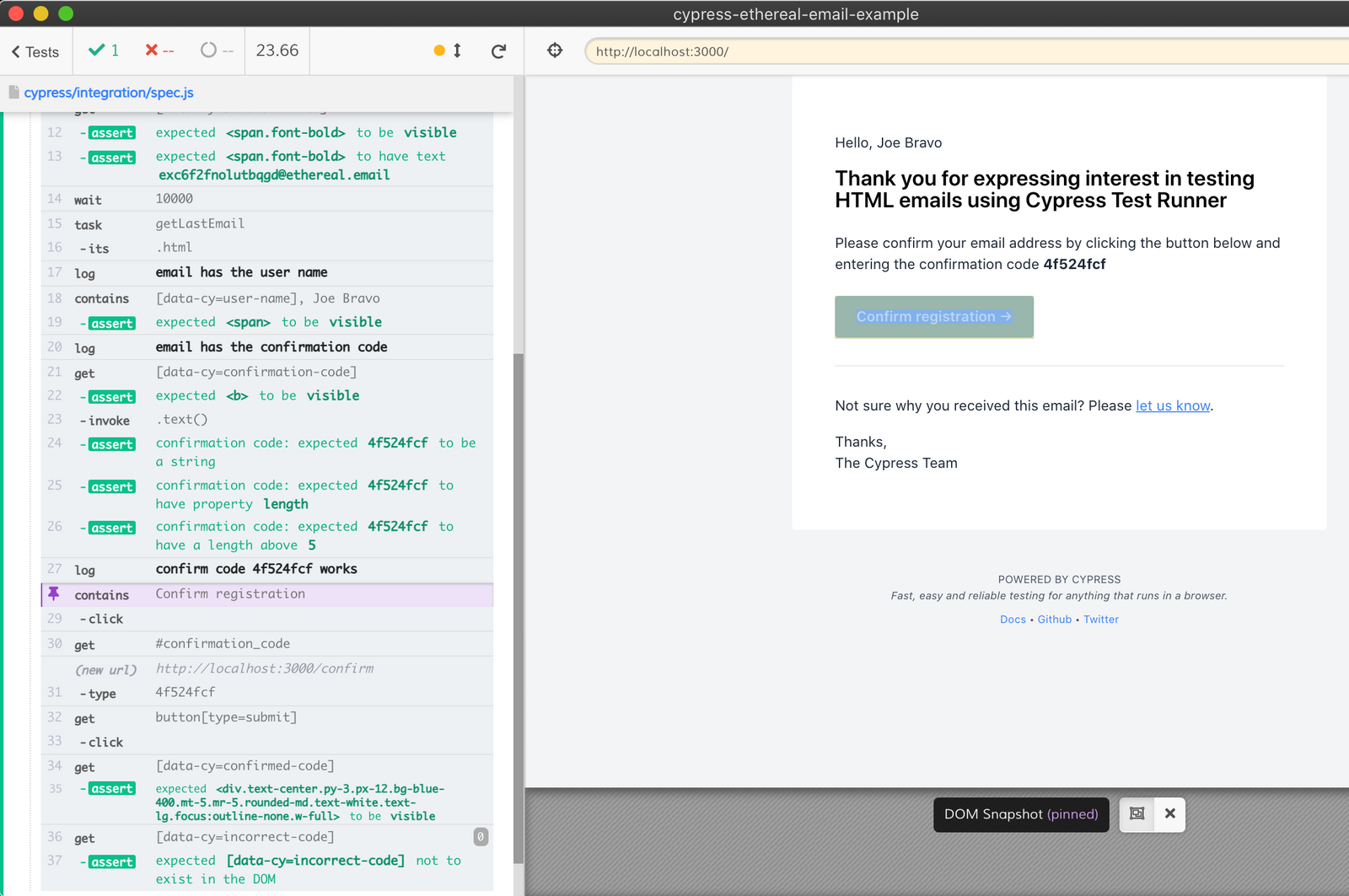








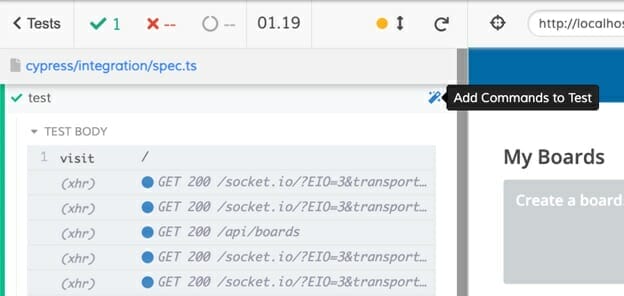

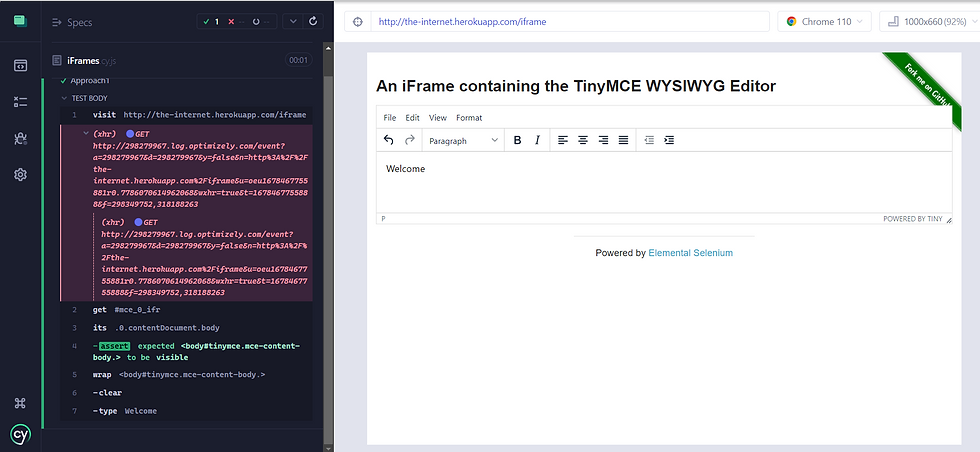



Article link: cypress get attribute of element.
Learn more about the topic cypress get attribute of element.
- Cypress basics: Check attributes, value and text – Filip Hric
- How to check for Attribute Values in Cypress? – BrowserStack
- Error trying to get attribute from element in Cypress
- Element Attributes | Cypress examples (v12.14.0)
- Cypress Locators : How to find HTML elements – BrowserStack
- How to check if an Element exists using Cypress? – BrowserStack
- Cypress – Part 2 – CSS & XPath Locators, Assertions, Folder …
- Querying – Cypress.io: Kitchen Sink
- Element Attributes | Cypress examples (v12.14.0)
- How to Check for Attribute Values in Cypress – Webtips
- cypress-commands/docs/attribute.md at develop – GitHub
- Cypress Get Attribute value and store in Variable
- How to get element text in Cypress | by Anshita Bhasin – Medium
See more: nhanvietluanvan.com/luat-hoc